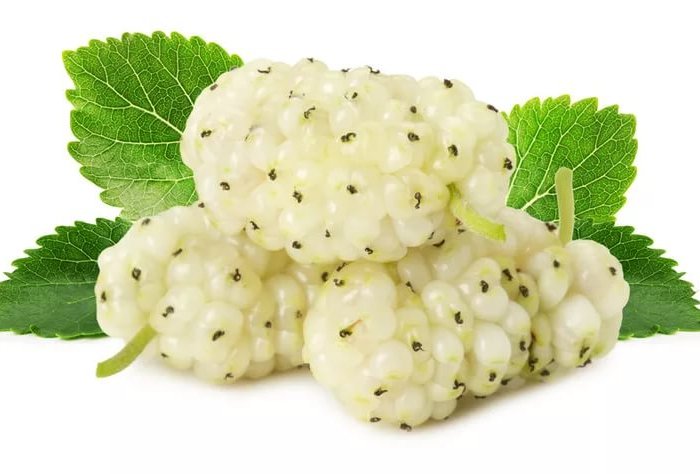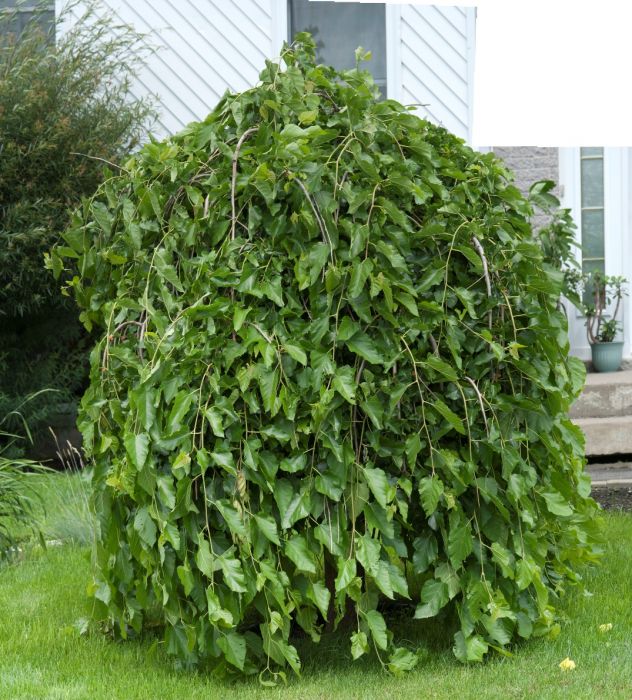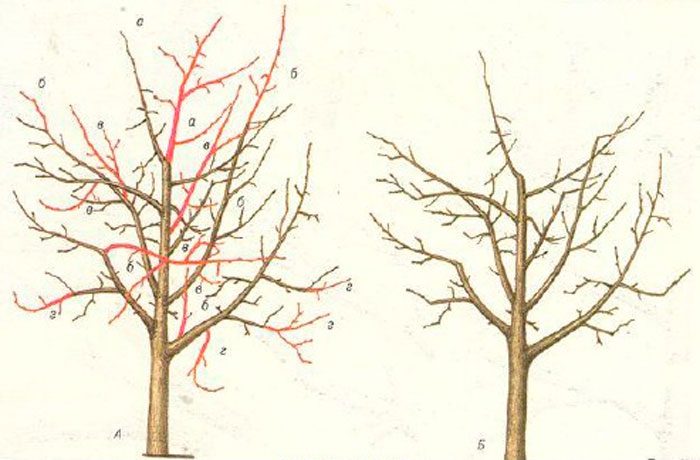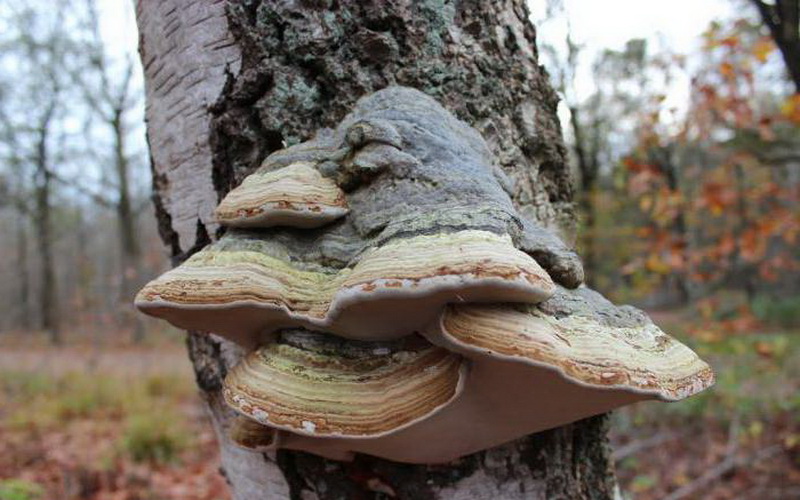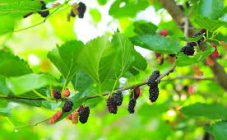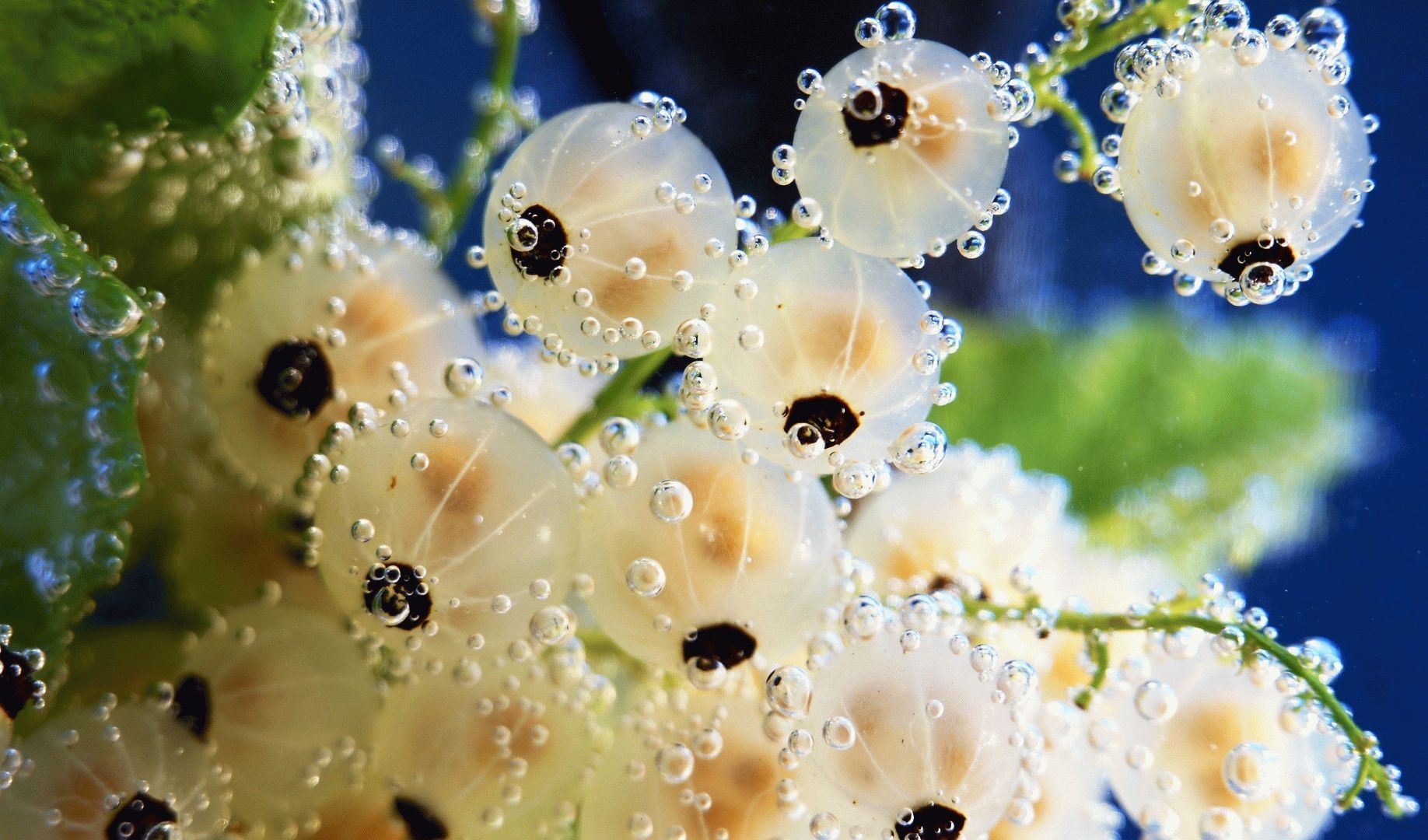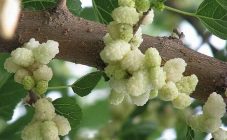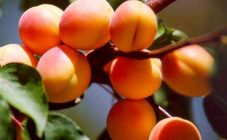Content:
Mulberry is a mulberry tree or mulberry tree (its height varies from 1 to 15 meters). She belongs to the Mulberry family. The culture is widespread in Asia, North America, Africa, India. On the Russian territory, its cultivation began in the time of Ivan IV the Terrible.
There are 17 to 24 species of mulberry in the world. Culture is considered very valuable. Its fruits are tasty and healthy. The bark of the tree is used to make many handicrafts, barrels, musical instruments. And silkworms feed on mulberry leaves. Their pupae are used to make silk.
The main types of mulberry
The culture is divided into three types (the first two are fertile species):
- White mulberry. It has a light bark, white, black, pink berries. The mulberry tree was brought from China. It can grow in hot, temperate climates. The plant can withstand frost down to -30 degrees, it tolerates winter well in the middle lane.
- Black mulberry. The bark is reddish-brown. Culture of Iranian origin. It can be grown in the south of Russia. It does not differ in frost resistance; this plant cannot be cultivated in cold regions.
- Red mulberry. It is native to North America and enjoys a dry, hot climate. Breeding of this species is impossible on the territory of Russia.
The most popular varieties of white mulberry
- Staromoskovskaya. It is frost-resistant, has a spherical crown, almost black berries 3 cm long.
- White honey. The culture is frost-resistant, unpretentious, resistant to diseases and pests. Fruits are medium in size, white and sweet in taste. They are not suitable for transport.
- Baroness or Black Baroness. It is characterized by a high yield, suitable for the middle lane. The berries are large (3.5 cm long, 1.5 cm in diameter), they are well preserved, transported over short distances.
- Luganochka... Its fruits are creamy pink and cannot be transported.
- The dark woman... The tree is tall. The crown is spherical. Fruits are black (their length is 3 cm), slightly sour in taste. The culture differs in a little frost resistance than the Baroness variety.
- White tenderness. Fruits are large (5cm), white, not suitable for transportation.
- Shelley. The Poltava variety is characterized by stable growth. Berries (5.5 cm).
White mulberry tree has many decorative types. They do not bear fruit, they are used for landscape design. The most common varieties:
- Large-leaved mulberry. Leaf diameter 22cm.
- Weeping mulberry (ampelous). It has hanging, flexible stems.
- Of the most famous species, they also call Golden, Tatar, Open-leaved.
Mulberry growing conditions
The tree should be planted in a well-lit, sunny area, protected from various winds and drafts.Best on the south side of the garden.
Mulberry can grow on almost any soil. However, fertile, nutritious land contributes to good fruiting of the culture. Do not plant mulberries on dry sandy, salty, damp, waterlogged soils. The groundwater level should not exceed 1.5 meters.
If a mulberry tree is to be grown as a bole, then it should be planted from other trees at a distance of 5 - 6 m. If it is a small bush (3 - 4 m).
Planting mulberries in the spring in the middle lane
Crop planting is carried out in autumn or spring. For the middle lane, the spring period is more suitable (late April - early May). Until that moment when the buds begin to bloom.
- It is necessary to prepare the planting pit in advance (two weeks before the start of work). Experienced gardeners recommend doing this in the fall.
- A hole is dug 70x70 cm in size, 60 cm deep (the roots should fit freely). Drainage is laid at its bottom. Broken brick, expanded clay, small stones are used. If the soil is heavy, clayey is very important.
- Then put humus, rotted compost into the planting pit, add any mineral complex composition. You can take superphosphate (70 gr.), Potassium salt (30 gr.). All components must fill the excavation one third. They cover the ground from above. It should be enough. It is necessary that the roots do not touch the fertilizers. Spill with water. Everything is left for 14 days.
- Two weeks later, a seedling is planted. It is lowered into the prepared hole, the roots are straightened, carefully sprinkled with earth, tamped. Water abundantly (2 - 3 buckets of water). Mulch with peat.
- Autumn planting is carried out in the same way as spring planting. In the south, it is preferable to plant plants 1.5 months before the arrival of frost (September - October).
Mulberries that work best for the middle lane:
- grade White honey;
- grade Vladimirskaya;
- grade Royal;
- grade Staromoskovskaya.
White mulberry: growing and care in the middle lane
It is quite easy to grow mulberry trees. A newly planted tree is not worth worrying about. Caring for him comes down to the following steps:
- A young tree needs abundant watering for the first 4-5 years, especially in hot, dry weather. No need to water the plant during rains. After each irrigation, be sure to loosen the soil.
- In the first year, as well as the next two to three seasons, the plant has enough nutrients, which were introduced during the planting of the seedling. It does not need additional feeding.
- To increase the number of side branches in young trees, only the tops of the shoots are cut off.
- For the winter, young seedlings must be completely wrapped with a covering material or a cloth (it must allow air to pass through).
To grow a healthy and strong mulberry, cultivation and further care are reduced to the following actions:
- Mature trees are watered during the dry season from spring to July. Use 10 liters of water per copy (15 - 20 liters of fluid per week).
- You can start feeding mulberries after planting plants after 2 to 3 years. In the spring, fertilize before the leaves bloom. Use the drug Nitroamofosk or Azotofosk (50 g each), other nutrients.
- During the ripening of the fruits, they take a choice: infusion of mullein (1:10), chicken dung diluted with water (1:15) or urea (7%). Do not overfeed the mulberry, otherwise it will stop bearing fruit.
- It is necessary to loosen, mulch the near-stem zones after the top dressing has been made.
- In autumn, plants are fertilized with potassium-phosphorus substances.
- The circumferential circles are weeded regularly throughout the season.
- In spring and autumn, mulberries are pruned. In the spring, work is carried out before sap flow in order to form the crown. Autumn (sanitary) pruning is done after foliage falls. Sick, damaged, dried branches are cut off.
Most often in the middle lane, a mulberry tree is grown in the form of a bush (up to 3 meters high). Therefore, it is necessary to remove most of the shoots, leaving only 8-10 of the most developed specimens. Then every year you should cut 2 - 3 branches to the points of growth. As a result, each skeletal shoot will give 3 - 4 branches of the second tier, and the third - 10 branches. This makes a nice, comfortable mulberry bush.
It is important to prepare mulberries for winter:
- The tree is not watered after 20 July. So the green shoots will have time to ripen before the arrival of cold weather.
- In autumn (September-October), the trunks are cleared of weeds, loosened, mulched with peat, dry humus. A layer of at least 15 centimeters is made along the edges of the near-trunk zones, at the boles (30 cm). They must be opened in the spring.
Mulberry diseases
Mulberry has good immunity, but it can still be subject to various diseases. Treatment and prophylaxis should be carried out in early spring, before the buds bloom, and also before the trees should bloom. In the fall, plants need to be sprayed after the leaves are shed.
- Powdery mildew.
The tree is treated with Fundazol, Bordeaux liquid, and colloidal sulfur solution. In autumn, fallen leaves are harvested and burned.
- Cylindrosporiasis (brown spot).
When the first symptoms of a fungal disease are detected, and also after two weeks, the plant is sprayed with a liquid Silit solution (1%). Consumption rate: 3l. / wood.
- Bacteriosis.
Use the drug Fitoflavin, Gamair, preventive measures.
- Small-leaved curl.
Sucking insect pests are controlled to prevent disease. These are aphids, ticks, thrips. Urea (urea) can be used. Whitewash tree trunks with lime.
- Polypore is a mushroom.
The mushroom is cut out together with a piece of wood and burned. Disinfect the wound with a solution of copper sulfate (5%). Cover the treated area with a special mixture. Its composition: lime, clay, cow dung (1: 1: 2).
Treat wounds from mechanical damage with copper chloride, Nigrol substance (7 parts), wood ash (3 parts)
Mulberry has taken root well in the Leningrad Region - the cultivation of the culture began at the beginning of the 20th century. Today, white mulberry is quite successfully cultivated here in parks and gardens.
The cultivation and care of mulberries in the Black Earth Region is no different from other regions. Carry out the same actions as for the middle lane.
Many have heard about the Smolenskaya Pink mulberry - a short description, planting, caring for the plant:
- Early maturing culture is considered a novelty. It is distinguished by good frost resistance (withstands temperatures up to -35 degrees), which other varieties do not have.
- Mulberry has a short period of entry into fruiting. Trees give a crop 2 - 3 years old.
- On one tree there may be white, pale scarlet, pinkish berries at once (their size is no more than two to three centimeters).
- The fruits are sweet in taste and have a pleasant sourness. They have an unusual property. Turn pink in rainy weather. Planting conditions, as well as caring for the Smolensk beauty are the same as for other mulberries.
Mulberry is an unpretentious crop that can be grown in the middle lane. And while ordinary gardeners rarely cultivate the plant, it is clear that interest in mulberry is growing.
